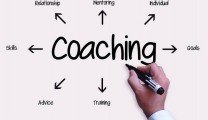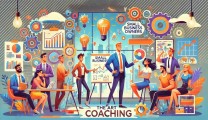However, managers must often put on the coaching hat in the office, when training their employees in new skills without having much previous experience with the upcoming project.
The good thing is that there are great coaching models that one can implement to help them along the way, even for those that have formal training.

The GROW Model of Coaching and Mentoring
This model was developed in the 1980s by actual business coaches; it’s a blueprint for how to structure your training session.
Grow is an acronym that stands for:
G – Goal
R – Current Reality
O – Options or obstacles
W – Will
First, think about the objective of the training, and what you want the trainees to come away with.
Second, consider the current situation—their current skill level, your knowledge of the subject, available resources, etc.
Third, you determine the best options for your training.
Do you have the time and funds needed?
Will your employees be able to comprehend the material, or do they need additional training before?
In the final stage, the will, you focus on your own commitment to the process, and if you’re ready to start the training at the given time.

The FUEL Model
This model involves four steps to a successful training session, which involve:
F – Frame the conversation
U – Understand the current state
E – Explore the desired state
L – Lay out a success plan
First, the coach must involve the trainees in the conversation about the need for training and how it will be implemented.
All parties need to be on the same page about the need for the training, the best way to implement it and what the desired objectives will be.
Second, the coach will try to get insight into the current situation at the workplace.
This is best done by asking open-ended questions of the employees, and using critical thinking about their responses.
This step will help the trainer and attendees work together in the best possible way, without missing or dismissing any concerns the employees may have.
Third, the trainer must help the attendees create a vision for a successful training session.
What do the employees hope to accomplish from the process?
What routes can best get them there?
Are there alternatives to explore?
Are there barriers to success?
Finally, the trainer needs to create and share the steps of what will happen.
Outlining objectives and timelines will help the employees understand what is expected of them.












Replies to This Discussion